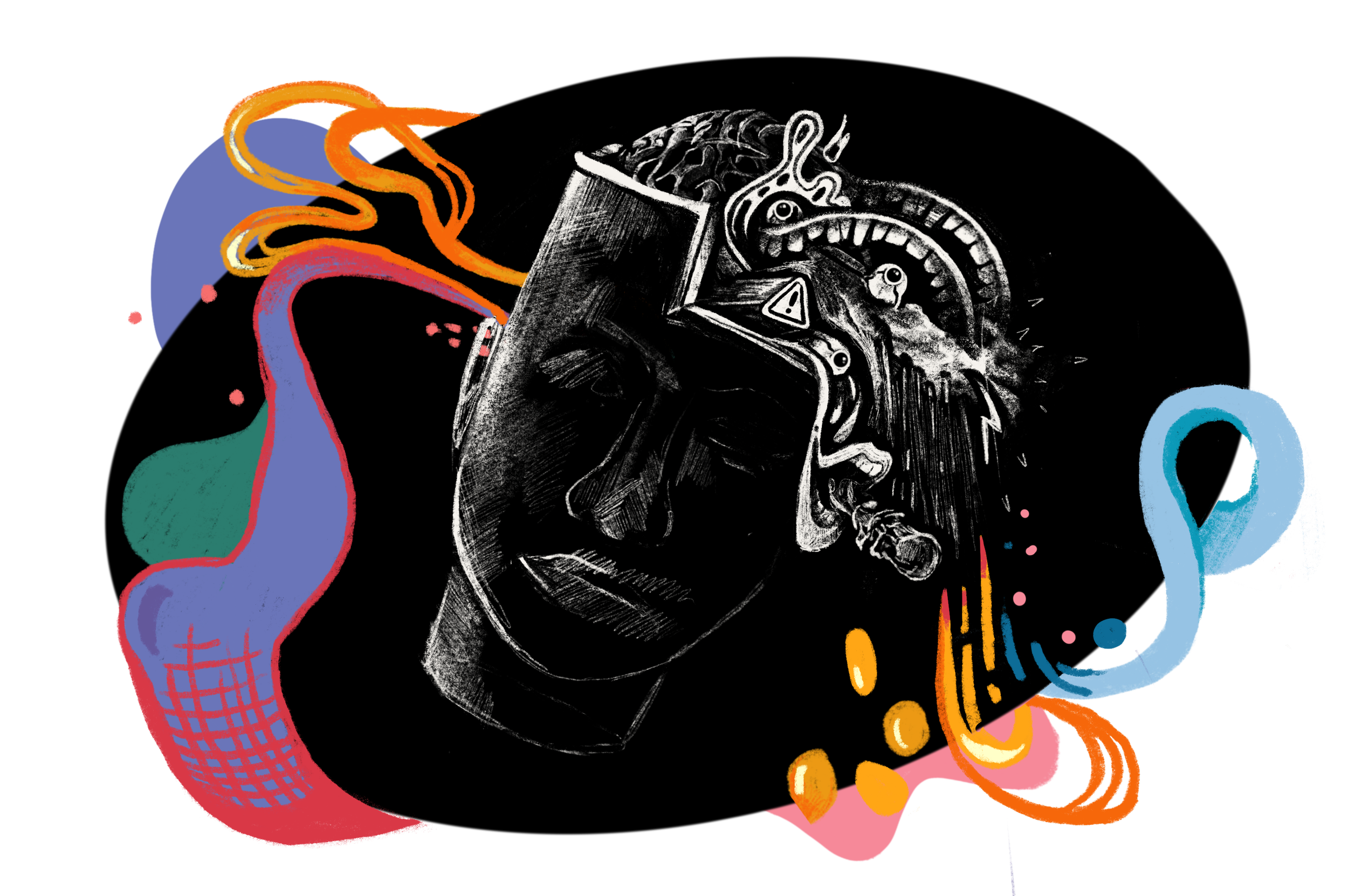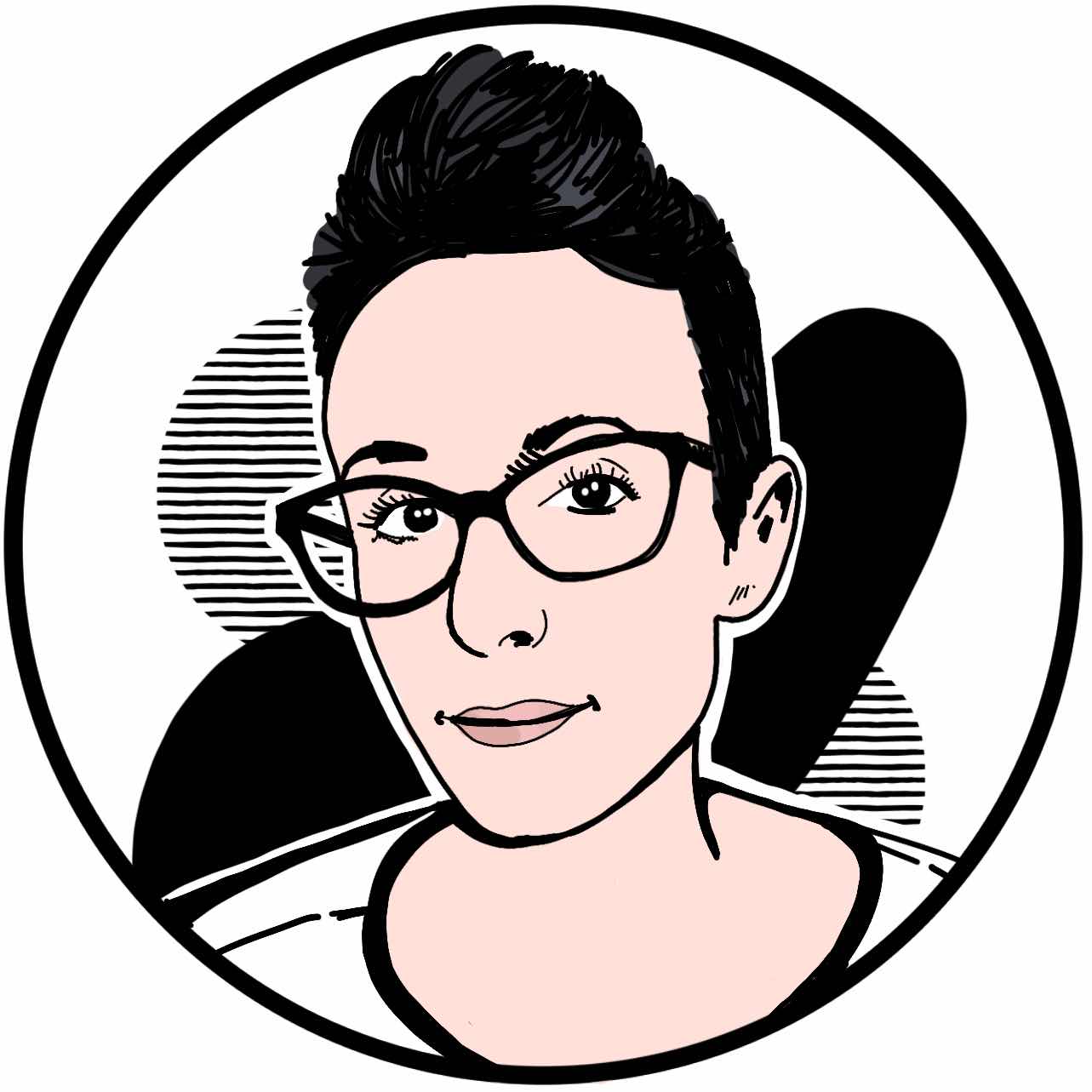When it comes to psychedelics, one aspect still strikes fear into people’s hearts, even as legalization creeps closer: the specter of the “bad trip.” Bad trips are commonly understood as moments when the chemical takes you over, a hallucination induced from an outside source filled with nightmarish images that you can’t escape—but that’s not how tripping actually works. Whatever you encounter on a psychedelic journey was already inside you, and it’s there whether or not you choose to look.
Language shapes our reality, and the words we use speak volumes. The modern vernacular has gotten the intention of terms related to consciousness-altering all twisted. The word “psychedelic,” for example, denotes hippies, tie-dye, and hallucinations, visioning things that aren’t actually there. But it actually means “mind-manifesting,” formed from the Greek words “psyche” and “deloun,” meaning “to make visible or clear.” And the word “psyche,” in Greek, doesn’t just refer to the mind, but also the spirit or soul.
The term “psychedelic” was coined in the 1960s by Humphrey Osmond, a Canadian psychiatrist researching the therapeutic use of mescaline and LSD. At first, drugs like these were called “psychotomimetics”—those that mimic losing one’s mind. We changed the word, but the bias persists. Today, “you’re tripping” is shorthand for “you’re crazy.”
The fear has gripped the Global North ever since the Nixon administration promoted stories of people jumping off buildings on LSD. But many posit that there are no bad trips, only challenging ones—and within the struggle, the most profound insights can often be found from facing down individual and collective experiences. This might include repressed memories of childhood abuse and the roots of intergenerational trauma coming to the surface, or experiencing the violence imposed upon underrepresented groups and all life on the planet.
To be sure, there are scary trips and sad trips, all revealing subconscious pain: the thing we go our whole lives trying to avoid. Suppressing that pain through coping mechanisms like compulsions and detachment is the only way to survive as a child who doesn’t have a safe space to feel their feelings and share their authentic selves with a supportive adult, so it makes sense that we continue the habit into adulthood. But somatic work—such as breathwork, EMDR, and especially psychedelic therapy—can create the container where that emotional experience can finally be processed.
It’s all about safety and holding, a comfortable set and setting and an empathetic witness who can affirm your experience like your parents weren’t able to do back then. When you finally have the space to feel, everything you’ve been keeping down since childhood bubbles up. That’s because traumatic experiences never go away; you forget in your conscious, cognitive mind, but the body remembers, storing them in your nervous system and causing you to react to past situations like they’re in the present.
The point is to make the invisible visible; to shine a light in the dark places. By not facing something, you’re not making it go away—it just metastasizes into something else. Researchers such as Dr. Gabor Maté say that repressing trauma and stress causes physical as well as mental unwellness. This pain dwells in unseen places in our body and mind, and on psychedelic journeys, it can manifest as all manner of nightmarish visions, from monsters and ghouls to dead relatives trying to possess you; experiencing all the different ways to die; or the feeling that you’re disappearing. (It’s why no psychedelic work should ever be done without proper preparation and integration.)
Ayahuasca, for example, is a psychedelic brew that takes you back to the source, revisiting difficult experiences in order to purge them. Traditionally, Amazonian hunters would commune with this plant spirit to induce a state of healthy fear, highlighting the frailty of all life. Similarly, ibogaine rituals in West Africa involve a state of vivid introspection where painful truths are brought forth. Yet in the case of either of these medicines, the fear of facing what’s within, or of the substance itself, is typically much scarier than the actual experience.
There are, however, bad therapists and inexperienced guides, sham shamans and predatory practitioners as well as unsupportive and unsafe physical environments, such as parties or, if you’re inexperienced and the medicine is strong, solo journeys. At best, these can block healing; at worst, they may retraumatize people or trigger latent mental conditions. The point is to be gently led to your own awareness and empowered healing by someone who knows the territory; it’s why some think psychedelic therapists should be required to have firsthand experience.
Really, “bad trips” are just you talking to yourself, trying to alert you of something that needs to change and all that you’ve been hiding from your own awareness. It happens not because you want to punish yourself; on the contrary, it’s because you love yourself so much that you’d rather have a difficult journey than keep living in a way that denies your authentic experience or turns the pain into physical suffering.
Whatever you call it, psychedelic and somatic experiences bring forth what was already there, and we can either face it, or run forever. Johns Hopkins researchers use the “Challenging Experience Questionnaire,” not the “Bad Trips Checklist.” Most respondents to an online survey said they found meaning in the challenge, and would do it again knowing there might be scary moments. After all, once you’ve had enough suffering, you will know the time has come for healing, and your true self will be there waiting for you to come home.


